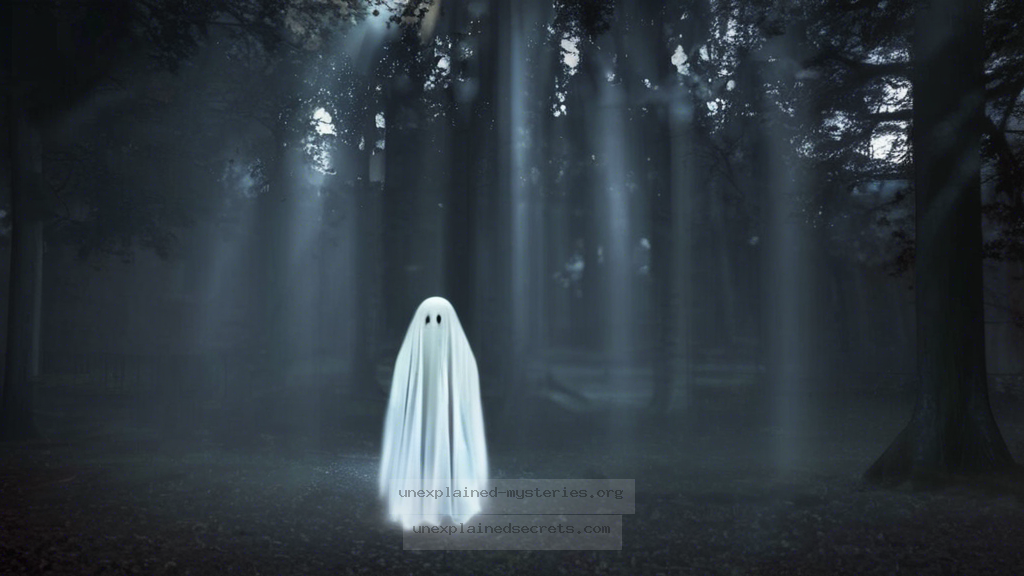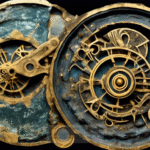What Lies Behind the Most Documented Ghost Sightings: Are They Just Tricks of the Mind or Something More?
What Lies Behind the Most Documented Ghost Sightings: Are They Just Tricks of the Mind or Something More?
The world of ghost sightings is a captivating realm where the boundaries of reality and the supernatural blur, leading many to ponder: are these spectral apparitions mere figments of the imagination, or do they represent something more profound? This question not only explores the nature of ghost sightings but also delves into the human psyche and the cultural contexts that shape our understanding of these mysterious encounters. Investigating the phenomenon of ghost sightings can provide insight into historical accounts, psychological implications, and even scientific inquiries—making it a topic worthy of in-depth exploration.
Historical Context of Ghost Sightings
Ghost sightings have been reported throughout history, from ancient civilizations to modern-day encounters. Historical texts, folklore, and religious scriptures often contain references to apparitions, spirits, and the afterlife. For instance, the ancient Egyptians believed in a complex afterlife, where the souls of the deceased would wander, sometimes returning to the living world. In medieval Europe, ghosts were often tied to the moral condition of the deceased, believed to wander the earth seeking justice or resolution.
One of the most famous historical ghost sightings occurred in the 16th century, documented in the case of the “Spirit of Anne Boleyn,” the second wife of King Henry VIII. Her ghost was reportedly seen roaming the halls of the Tower of London, where she was executed. Such sightings are often laden with cultural significance, revealing societal fears, beliefs, and the human need for closure regarding death.
Core Concepts and Theories Surrounding Ghost Sightings
Several theories attempt to explain the phenomenon of ghost sightings, ranging from psychological to paranormal perspectives. Some of the most prevalent theories include:
- Psychological Interpretations: Many psychologists argue that ghost sightings can be attributed to suggestibility, hallucinations, or the brain’s response to stress and grief. In low-light conditions, for example, the brain may misinterpret shadows or sounds, leading to the perception of a ghostly presence.
- Environmental Factors: Certain environmental conditions, like electromagnetic fields, infrasound, or carbon monoxide poisoning, have been linked to ghostly experiences. These factors can induce feelings of unease, anxiety, and even hallucinations.
- Spiritual Beliefs: Many cultures believe in the existence of spirits and the afterlife. This belief can shape one’s interpretation of ambiguous experiences, leading to the conclusion that they have encountered a ghost.
Practical Implications: Evidence and Documentation
The pursuit of evidence regarding ghost sightings has led to numerous investigations, both amateur and professional. Paranormal investigators often use tools such as EMF meters, infrared cameras, and audio recording devices to capture potential evidence of ghostly activity. One notable example is the infamous “Amityville Horror” case, where the Lutz family reported unsettling experiences in their home, including ghostly apparitions and strange noises. Investigators later documented unexplained phenomena, although skepticism remains regarding the authenticity of the claims.
Another significant case is that of the “Enfield Poltergeist,” which occurred in London in the late 1970s. The Hodgson family reported a series of bizarre events, including furniture moving, strange noises, and the appearance of a ghostly figure. Investigators, including the renowned paranormal researchers Ed and Lorraine Warren, documented their findings, although the case remains a point of contention regarding its legitimacy.
Alternative Perspectives: Skepticism and Rational Explanations
Despite the numerous accounts of ghost sightings, skepticism persists within the scientific community. Many skeptics argue that anecdotal evidence is insufficient to substantiate the existence of ghosts. They maintain that psychological and environmental explanations can account for most ghostly encounters. For example, the “sensed presence” phenomenon, where individuals report feeling an unseen entity nearby, can often be traced back to neurological responses rather than supernatural causes.
Additionally, the phenomenon of pareidolia—where the mind perceives familiar patterns, such as faces in shadows—can lead to misinterpretations of ordinary stimuli as ghostly figures. This understanding positions ghost sightings within the realm of human perception and cognition rather than the supernatural.
Common Misconceptions About Ghost Sightings
Several misconceptions surround ghost sightings, leading to misunderstanding and misinterpretation of experiences. Addressing these misconceptions can help clarify the nature of ghostly encounters:
- Misconception 1: All ghost sightings are hoaxes. While some cases may be fabricated, many individuals report genuine experiences that cannot be easily dismissed.
- Misconception 2: Ghosts are always malevolent. Many reports describe benign or even friendly apparitions that seem to offer comfort or protection.
- Misconception 3: Ghosts are only seen in haunted locations. Ghost sightings can occur in everyday settings, suggesting that the presence of spirits is not confined to specific locations.
Best Practices for Investigating Ghost Sightings
For those interested in investigating ghost sightings, adhering to best practices can enhance the credibility of findings. Here are some guidelines:
- Use Reliable Equipment: Invest in quality tools such as EMF detectors, digital voice recorders, and thermal imaging cameras to gather evidence systematically.
- Document Everything: Keep thorough records of experiences, including dates, locations, and specific details of sightings. This documentation can help identify patterns and correlations.
- Conduct Controlled Investigations: Whenever possible, investigate in controlled environments to minimize external factors that could influence results.
Future Developments and Ongoing Research
The field of paranormal investigation continues to evolve, incorporating advances in technology and psychology. Researchers are increasingly exploring the intersection of neuroscience and ghost sightings, aiming to understand how the brain interprets experiences perceived as supernatural. Ongoing studies may provide deeper insights into the phenomenon, potentially bridging the gap between scientific understanding and spiritual beliefs.
Moreover, the rise of digital forensics in paranormal investigations could lead to more comprehensive analyses of evidence, allowing for better scrutiny of claims and a clearer understanding of ghost sightings.
Conclusion: The Enigma of Ghost Sightings
Ghost sightings remain one of the most fascinating mysteries of the human experience, prompting us to question the nature of reality and the afterlife. While psychological and environmental factors provide plausible explanations for many encounters, the cultural significance and personal impact of these experiences cannot be overlooked. As researchers continue to explore the intricate relationship between the mind, the environment, and the supernatural, we may inch closer to understanding the phenomena that captivate our imaginations and ignite our curiosity.
In summation, whether you are a skeptic or a believer, the mystery of ghost sightings is a testament to the complexities of human perception and our eternal quest for understanding what lies beyond the veil of existence. 🌌
Other Articles
Recent Posts
- What Happened to Flight MH370? The Conspiracy Theories That Still Haunt Us
- What Secrets Lurk Within the Walls of the Infamous Trans-Allegheny Lunatic Asylum?
- What Evidence Supports the Existence of Bigfoot in the Pacific Northwest?
- What Happened to the Indus Valley Civilization? Unraveling the Mysteries of Ancient Urban Life
- Can Telepathy Be Scientifically Proven Through Laboratory Evidence?







